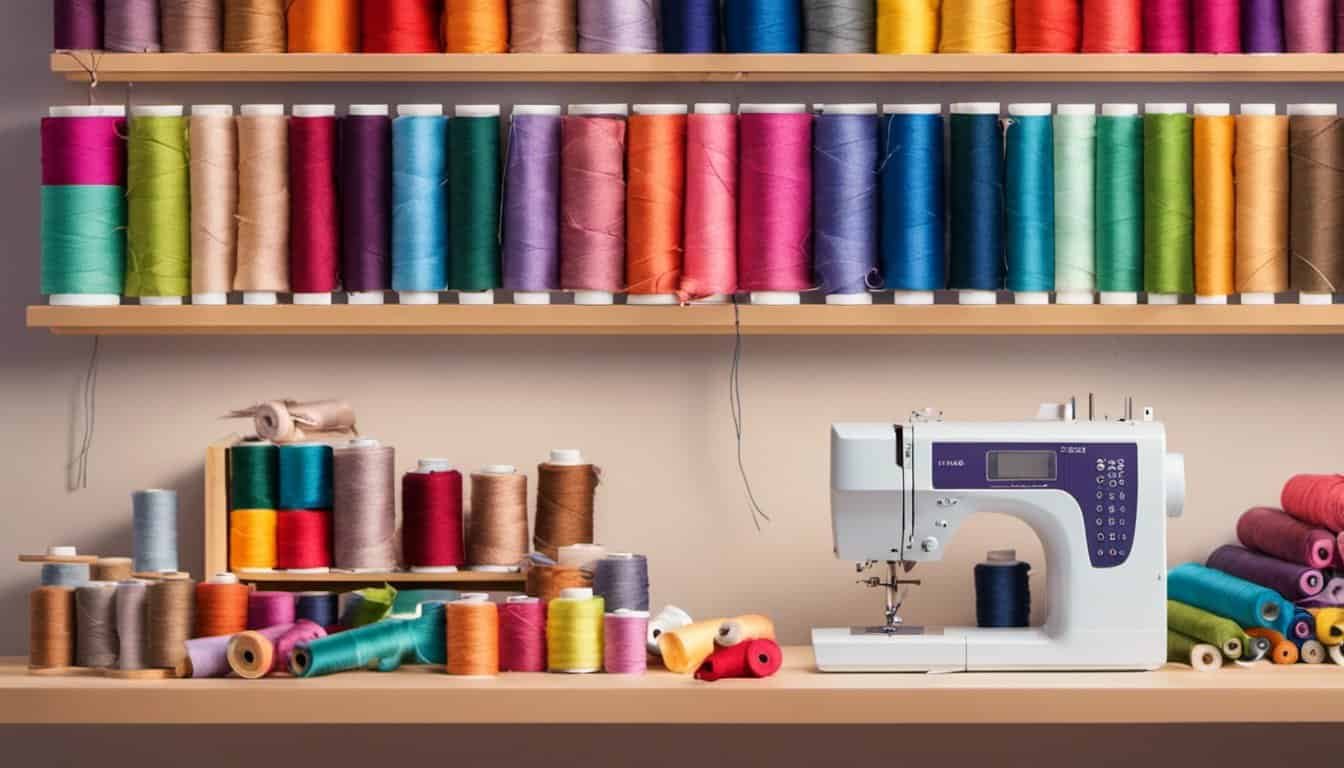I’ve always loved the idea of reducing waste and adding a personal touch to everyday items. One of my favorite projects is sewing my own reusable grocery bags. They’re not just practical, but they also let me show off my creativity while helping the planet. Plus, they’re way sturdier than those flimsy plastic bags that always seem to tear at the worst moments.
Materials Needed
Having the right materials makes sewing a reusable grocery bag efficient and enjoyable. Here’s what I use:
- Fabric: 1 yard of durable cotton or canvas, such as duck cloth or upholstery fabric, works well. These materials ensure the bag’s longevity and strength.
- Thread: A spool of heavy-duty polyester thread matches the fabric to provide durability and a clean finish.
- Straps: 1-inch-wide webbing or pre-made straps, approximately 4 feet in total length, for sturdy handles.
- Pins or Clips: A set of straight pins or sewing clips keeps pieces together while sewing.
- Measuring Tools: A tape measure or ruler ensures accurate cuts and strap placement.
- Cutting Tools: Sharp fabric scissors or a rotary cutter with a cutting mat for precise cuts.
- Sewing Machine: A standard sewing machine with a heavy-duty needle can handle thicker fabrics.
- Iron and Ironing Board: Pressing the fabric before and during sewing creates crisp edges and professional results.
- Optional Embellishments: Fabric paint, patches, or embroidery materials personalize the bag.
Having these materials on hand simplifies the process and helps create strong and unique grocery bags.
Choosing the Right Fabric
Selecting the appropriate fabric is essential for a reusable grocery bag’s strength and sustainability. The right fabric ensures durability, easy maintenance, and environmental friendliness.
Best Fabrics for Durability
Durability is crucial for reusable bags meant to carry heavy groceries. Canvas is my go-to option due to its sturdy weave and ability to support weight without tearing. Denim is another excellent choice for its robustness and long-lasting qualities. For water resistance, consider oilcloth or laminated cotton, which also offer durability with added protection against spills. Avoid lightweight fabrics like quilting cotton since they may wear out quickly under frequent use.
Eco-Friendly Fabric Options
Eco-friendly fabrics reduce environmental impact while promoting sustainability. Organic cotton, free from harmful pesticides, combines strength with an earth-conscious appeal. Hemp fabric stands out for its eco-friendly production and high durability, making it perfect for heavy-duty bags. Recycled materials, such as polyester made from plastic bottles, help repurpose waste into functional items. I always recommend checking certifications like GOTS (Global Organic Textile Standard) when choosing sustainable options.
Step-By-Step Instructions
Making a reusable grocery bag involves a few straightforward steps. Follow these instructions to craft a durable and personal bag perfect for all your shopping needs.
Cutting the Fabric
I start by laying the fabric flat on a clean surface. Using a measuring tape, I cut two identical rectangles, typically 18×20 inches, for a medium-sized bag. For the bottom gusset, I cut a 4×18-inch strip if I want extra depth. Mark the measurements with fabric chalk to ensure accuracy. Sharpened fabric scissors or a rotary cutter helps create clean edges for better sewing results.
Sewing the Bag Edges
I pin the two main rectangles together with the right sides facing inward. Beginning at one side’s edge, I sew along three sides—two long edges and one short edge—using a ½-inch seam allowance. For added strength, I reinforce the seams with a zigzag or serger stitch. If I’ve added a gusset strip, I align and sew it around the bottom edge while ensuring the corners are neat.
Adding Handles
To create sturdy handles, I use two fabric strips, each about 22 inches long and 3 inches wide. Folding each strip lengthwise, I press it with an iron and sew along the edges to form a tube. After turning the tubes inside out and pressing them flat, I attach the handles by sewing the ends onto the top edge of the bag, about 4 inches in from each side. Double-stitching ensures they hold under heavy loads.
Final Touches
I trim loose threads and turn the bag right-side out. If I want a polished look, I fold the top edge inward by ½ inch, press it, and sew a hem around the entire opening. Adding a decorative pocket or embroidery can make the bag personal and unique.
Tips for Beginners
Starting with reusable grocery bags can feel overwhelming, but a few simple tips make the process more enjoyable and efficient. Learning from common pitfalls and focusing on durability ensures great results.
Common Mistakes to Avoid
Rushing the process often leads to uneven seams or misaligned pieces. I take my time measuring and cutting to avoid these issues. Using lightweight or stretchy fabrics instead of sturdy options like canvas can result in bags that tear easily under weight. I check fabric labels to ensure durability before cutting. Skipping reinforcements on stress points like handles causes premature wear. I always double-stitch or add fabric reinforcements to these areas for extra strength.
Another error is forgetting to prewash fabric. I wash and dry materials to eliminate shrinkage after sewing. Finally, not testing tension or stitch settings on scrap pieces leads to uneven stitches; I adjust my machine before starting on the final project.

Enhancing Durability
Choosing strong materials like denim or canvas as a base is key. I rely on heavy-duty thread because it resists fraying and breaking, especially under heavy loads. I also use French seams or zigzag stitches along raw edges to prevent fraying over time. For handles, I sew an “X” or box pattern at the attachment points, spreading tension across a larger surface.
To protect the bottom of the bag, I sew additional layers or use interfacing for extra reinforcement. Incorporating double stitching along high-stress areas, such as the bottom and sides, ensures the bag withstands repeated use. When working with water-resistant fabrics, using a dedicated needle designed for thicker materials prevents skipped stitches or damage.
Benefits of Sewing Your Own Grocery Bag
Sewing a reusable grocery bag offers both practical and creative benefits. These handmade bags provide an affordable, eco-conscious alternative to single-use plastics and store-bought options.
- Environmental Impact
Homemade grocery bags help reduce plastic waste, which contributes significantly to pollution. By choosing sustainable fabrics like organic cotton or hemp, I create a durable product that’s better for the planet.
- Customization
I enjoy tailoring each bag to my preferences, choosing colors, patterns, and sizes that fit my style and needs. Adding decorative elements like embroidery or printed designs allows me to make each bag unique.
- Cost Efficiency
« How to Make a Fabric Coaster Set That’s Practical, Stylish, and Perfect for Gifting
How to Sew a Fabric Car Organizer That Keeps Your Car Clutter-Free and Stylish »
Though purchasing high-quality fabric might require an upfront cost, sewing reusable bags saves money in the long term. These durable bags significantly outlast disposable and thin reusable options.
- Durability
I can control the strength of my bag by using sturdy materials, reinforced seams, and heavy-duty stitches. This ensures the bag can handle heavy groceries without wear and tear after repeated use.
- Skill Development
Every sewing project enhances my crafting skills. Creating grocery bags helps me practice techniques like double stitching, seam reinforcement, and handle construction while producing a functional item.
- Waste Reduction
I repurpose leftover fabric scraps or upcycle old materials into bags. Using pre-loved textiles adds a sustainable element to my sewing and keeps those materials out of landfills.
- Gift Potential
Personalized grocery bags make thoughtful gifts. I’ve found they can be easily customized for friends and family using their favorite colors or patterns.

Whether for environmental reasons, personal expression, or practicality, sewing reusable grocery bags combines creativity with sustainability.
Conclusion
Sewing your own reusable grocery bags is such a rewarding experience. Not only do you get a practical, eco-friendly solution for shopping, but you also get to showcase your creativity and make something truly unique. These bags aren’t just functional—they’re a reflection of your personal style and commitment to sustainability.
Whether you’re a beginner or an experienced sewer, crafting these bags is a fun way to build your skills and reduce waste at the same time. Plus, they make fantastic gifts for loved ones who’ll appreciate their thoughtfulness and durability. Happy sewing!

















